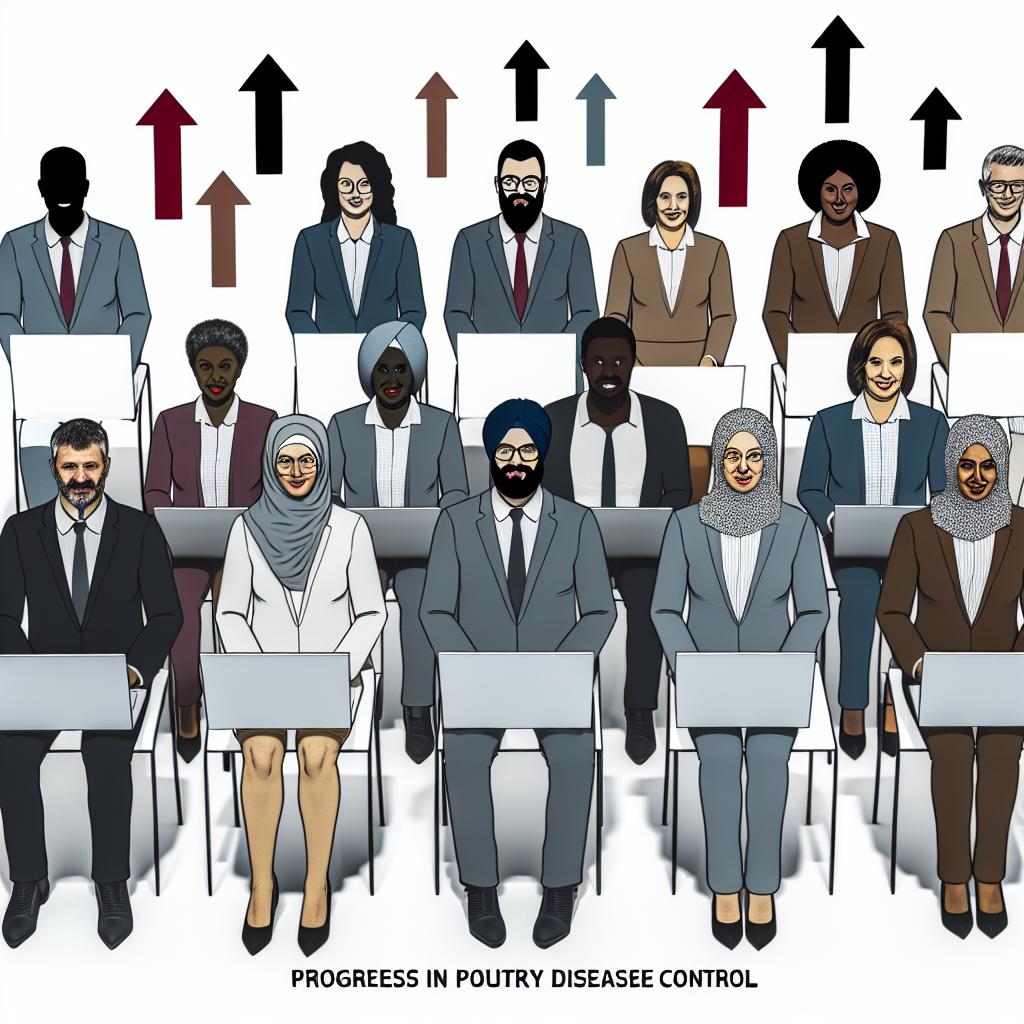Introduction
Poultry disease control plays a crucial role in the agricultural industry.
It ensures the health and productivity of poultry populations.
Throughout history, poultry disease outbreaks have caused devastating effects.
These outbreaks resulted in significant economic losses and disruptions.
Effective disease control measures are essential to prevent outbreaks.
Such measures help maintain a sustainable poultry production system.
Advancements in research, technology, and management practices have improved disease control.
These advancements increase the ability to diagnose, prevent, and control poultry diseases.
From vaccines and biosecurity measures to genetic selection and diagnostic tools, options have improved.
The tools available to poultry producers have never been more effective.
By staying informed and applying best practices, producers can protect flock health and welfare.
Continued investment in research and education is crucial for overcoming emerging diseases.
This investment helps address evolving challenges in poultry health management.
There are several current challenges in poultry disease control that farmers and veterinarians face.
Identification of common poultry diseases
One of the major challenges in controlling poultry diseases is accurately identifying the specific diseases affecting the birds.
This requires proper training and diagnostic tools to differentiate between various illnesses.
Common poultry diseases include Infectious Bronchitis, Newcastle Disease, Avian Influenza, Marek’s Disease, and Coccidiosis.
Each of these diseases presents unique symptoms and requires specific treatment methods.
Factors contributing to the spread of diseases within poultry populations
Another challenge in disease control is understanding the factors that contribute to the spread of diseases within poultry populations.
These factors include overcrowding, poor ventilation, and inadequate biosecurity measures.
Transform Your Career Today
Unlock a personalized career strategy that drives real results. Get tailored advice and a roadmap designed just for you.
Start NowPoultry diseases can spread rapidly through direct contact between birds, contaminated feed and water sources, as well as through pests such as rodents and insects.
It is crucial to identify and address these risk factors to prevent disease outbreaks.
Challenges of traditional disease control methods
Traditional disease control methods, such as vaccination and medication, have their limitations.
Vaccines may not always provide full protection against all strains of a disease, and there is a risk of the development of vaccine-resistant strains.
Additionally, the indiscriminate use of antibiotics can lead to drug resistance in bacteria, making certain diseases harder to treat.
Alternative methods, such as probiotics and organic acids, are being explored as potential solutions to these limitations.
Addressing the current challenges in poultry disease control requires a multi-faceted approach.
This approach must include accurate disease identification, understanding the spread of diseases, and exploring new methods to overcome traditional control limitations.
Introduction of Rapid Diagnostic Tools for Quick Disease Identification
Rapid diagnostic tools have revolutionized the way poultry diseases are identified.
These tools provide quick and accurate results.
They allow farmers to take necessary actions promptly.
One such tool is polymerase chain reaction (PCR) technology.
It can detect pathogens in a matter of hours.
This is faster compared to traditional methods that could take days.
This rapid identification helps in containing disease spread within the flock.
Another advancement is the use of serological tests.
These tests detect antibodies in the blood of infected birds.
They are highly sensitive and specific.
This sensitivity allows early detection before clinical signs appear.
Implementation of Biosecurity Measures to Prevent Disease Transmission
Biosecurity measures play a crucial role in preventing disease spread on poultry farms.
Transform Your Career Today
Unlock a personalized career strategy that drives real results. Get tailored advice and a roadmap designed just for you.
Start NowWith technological advancement, new and improved biosecurity protocols have been developed.
These protocols enhance disease control effectively.
One common biosecurity measure is the use of foot baths at entry points.
They prevent the introduction of pathogens into the farm.
Foot baths contain disinfectants that kill bacteria or viruses on footwear.
These pathogens may be present on visitors’ or workers’ shoes.
Another important measure is restricting visitors to the farm.
Limiting access to essential personnel only reduces disease introduction risks.
Development of Vaccines for Common Poultry Diseases
Vaccines are a cornerstone in poultry disease prevention and control.
Advancements in biotechnology have made vaccines more effective and accessible.
One example is the development of live attenuated vaccines.
These contain weakened forms of viruses or bacteria.
Vaccines stimulate strong immune responses without causing disease.
They provide long-lasting protection against future infections.
Another advancement is vectored vaccines.
These use harmless viruses to deliver antigens from target pathogens.
This technology enables targeted immune responses against specific pathogens.
Advances in detection, prevention, and control technology improve poultry health and welfare.
Utilizing rapid diagnostic tools allows timely disease management.
Implementing effective biosecurity measures reduces disease transmission.
Transform Your Career Today
Unlock a personalized career strategy that drives real results. Get tailored advice and a roadmap designed just for you.
Start NowDeveloping efficient vaccines enhances protection against common poultry diseases.
Combined, these strategies help farmers manage outbreaks and ensure bird well-being.
Uncover the Details: Regulations Governing Artificial Insemination Practices
Innovations in Treatment Options
- Use of probiotics and prebiotics to enhance immune system function in poultry
- Alternative therapies such as herbal supplements for disease prevention
- Genetic engineering for disease-resistant poultry breeds
Probiotics and prebiotics have been increasingly used in poultry farming to boost the immune system of birds.
These beneficial bacteria and compounds improve gut health.
They make the birds more resilient to infections.
Herbal supplements with their natural properties are gaining popularity as alternative therapies in poultry disease control.
These supplements offer a holistic approach to preventing diseases without the need for antibiotics.
Advancements in genetic engineering have enabled the development of disease-resistant poultry breeds.
Scientists manipulate the genes of chickens to create birds less susceptible to common diseases.
This reduces the need for medication.
Using a combination of these innovative treatment options, poultry farmers can effectively control diseases in their flocks.
They can also improve overall health and productivity.
It is essential to stay updated on the latest advancements in poultry disease control.
This ensures the well-being of the birds and the success of the farm.
Explore Further: Impact of Extension Agents on Sustainable Farming
Collaboration and Information Sharing in Disease Control Efforts
Effective disease control in poultry requires collaboration between industry stakeholders, veterinarians, and researchers.
This cooperation is vital to developing and implementing successful strategies to combat various diseases.
These diseases can impact poultry health and production significantly.
Importance of Collaboration Between Industry Stakeholders, Veterinarians, and Researchers
- Industry stakeholders play a crucial role in disease control efforts as they have firsthand knowledge of poultry production practices.
- They can implement effective preventive measures to reduce disease risks.
- Veterinarians bring expertise in diagnosing and treating poultry diseases to ensure early detection.
- They act swiftly to contain outbreaks and prevent spread.
- Researchers contribute valuable insights through studies on disease transmission, immunity, and vaccine development.
- They drive innovation in disease control methods to improve outcomes.
Sharing of Data and Best Practices to Improve Disease Control Strategies
Collaboration enables the sharing of data and best practices among stakeholders.
Transform Your Career Today
Unlock a personalized career strategy that drives real results. Get tailored advice and a roadmap designed just for you.
Start NowThis helps to refine disease control strategies effectively.
It also enhances overall biosecurity measures within the industry.
- Sharing information on disease prevalence, outbreak patterns, and treatment outcomes allows stakeholders to make data-driven decisions.
- Best practices such as proper hygiene protocols, vaccination schedules, and quarantine procedures can be disseminated and adopted industry-wide.
- Ongoing communication and knowledge exchange form the foundation for continuous improvement in disease control efforts.
- This ultimately benefits the entire poultry industry by reducing risks.
Global Initiatives to Address Poultry Disease Outbreaks
Addressing poultry disease outbreaks requires global cooperation and coordination.
This prevents the spread of pathogens across borders effectively.
Global poultry supply chains must be safeguarded against risks.
- International organizations such as the World Organization for Animal Health (OIE) and the Food and Agriculture Organization (FAO) play key roles in facilitating collaboration and sharing of best practices.
- Global initiatives like the Global Framework for the Progressive Control of Transboundary Animal Diseases (GF-TADs) aim to strengthen preparedness and response capacities.
- These efforts focus on combating transboundary animal diseases, including those affecting poultry.
- Joint research projects, capacity-building programs, and information-sharing networks help countries learn from each other’s experiences.
- They develop effective strategies to control and prevent poultry disease outbreaks on a global scale.
Delve into the Subject: Agricultural Policy Analyst vs. Agricultural Economist

Sustainable practices for long-term disease control
Implementing sustainable practices is crucial for preventing and controlling poultry diseases.
These practices help maintain flock health over the long term.
Farmers can incorporate various strategies into daily management routines.
Such strategies minimize the risk of disease outbreaks effectively.
Additionally, they ensure the well-being of poultry flocks consistently.
Importance of maintaining biosecurity protocols to prevent disease outbreaks
Biosecurity measures are essential for reducing pathogen introduction on farms.
Strict protocols limit bird exposure to disease-causing agents.
Controlling access to the farm is a key part of biosecurity.
Proper sanitation practices must be followed carefully and regularly.
Farmers should monitor and clean equipment and facilities routinely.
Environmental management strategies to reduce disease transmission
The environment plays a significant role in transmitting poultry diseases.
Effective management helps reduce infection risks in poultry houses.
Proper ventilation is vital for maintaining air quality and health.
Farmers should manage waste efficiently to prevent contamination.
Transform Your Career Today
Unlock a personalized career strategy that drives real results. Get tailored advice and a roadmap designed just for you.
Start NowMaintaining optimal temperature and humidity supports bird health.
Regular cleaning and disinfection prevent pathogen buildup on premises.
Integration of disease control measures into overall poultry management practices
Integrating disease control within poultry management ensures flock health.
Routine health monitoring detects issues early for prompt response.
Vaccination programs are crucial in protecting birds against specific diseases.
Disease surveillance helps identify potential threats quickly and efficiently.
Incorporating control measures into daily routines limits disease impact on performance.
Learn More: Best Practices for Effective Rangeland Restoration
Advances in Poultry Disease Control
In this blog post, we highlighted the importance of advances in poultry disease control.
Key points such as vaccination, biosecurity, and early detection methods were discussed.
It is crucial to continue research and innovation in poultry disease control.
Researchers and industry professionals should collaborate to enhance disease prevention strategies.
Early intervention and monitoring are essential to mitigate the impact of diseases on farms.
By prioritizing disease prevention, producers can maintain the health of their flock.
Continued investment in research will lead to more effective control measures.
The future of poultry production relies on a proactive approach to disease management.
With proper measures in place, the industry can thrive while ensuring food safety.
Let us work together to advance poultry disease control and secure a sustainable future.
Additional Resources
Assistance Listings Plant and Animal Disease, Pest Control, and …
Transform Your Career Today
Unlock a personalized career strategy that drives real results. Get tailored advice and a roadmap designed just for you.
Start Now



